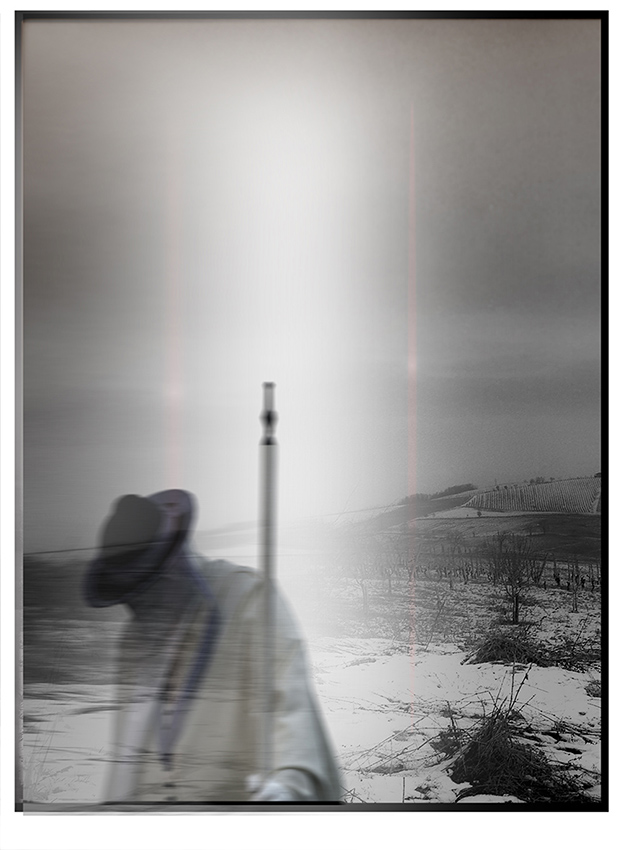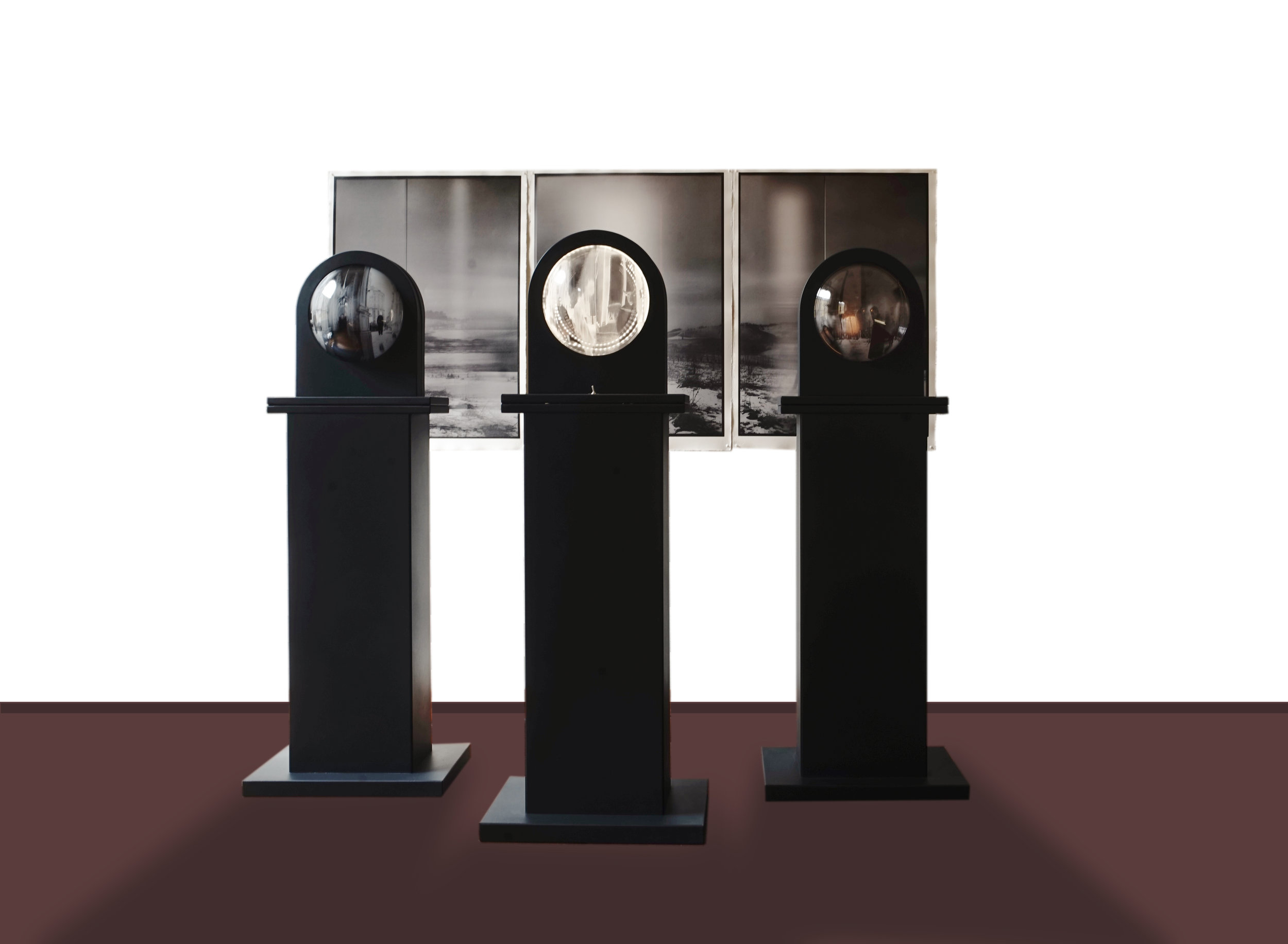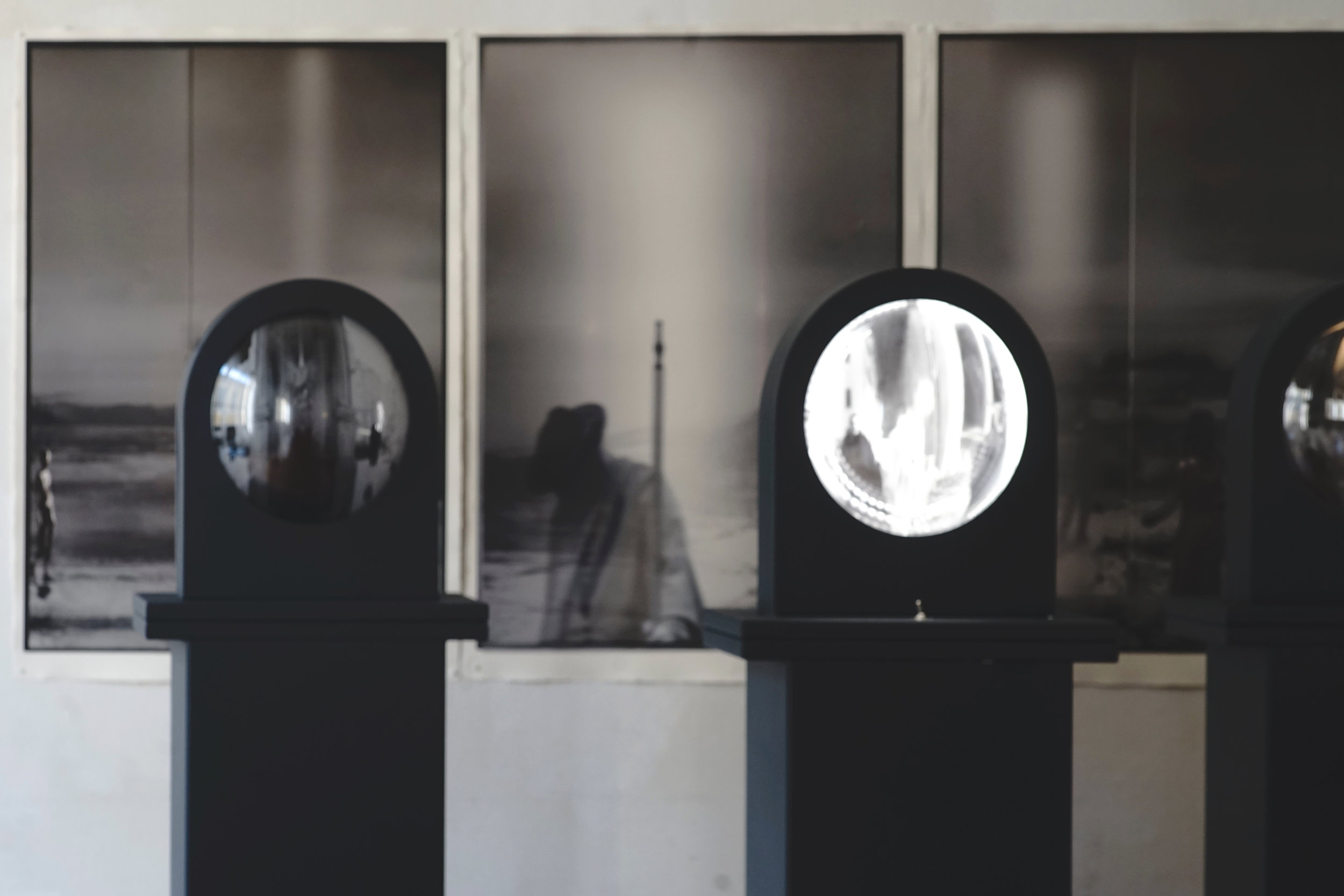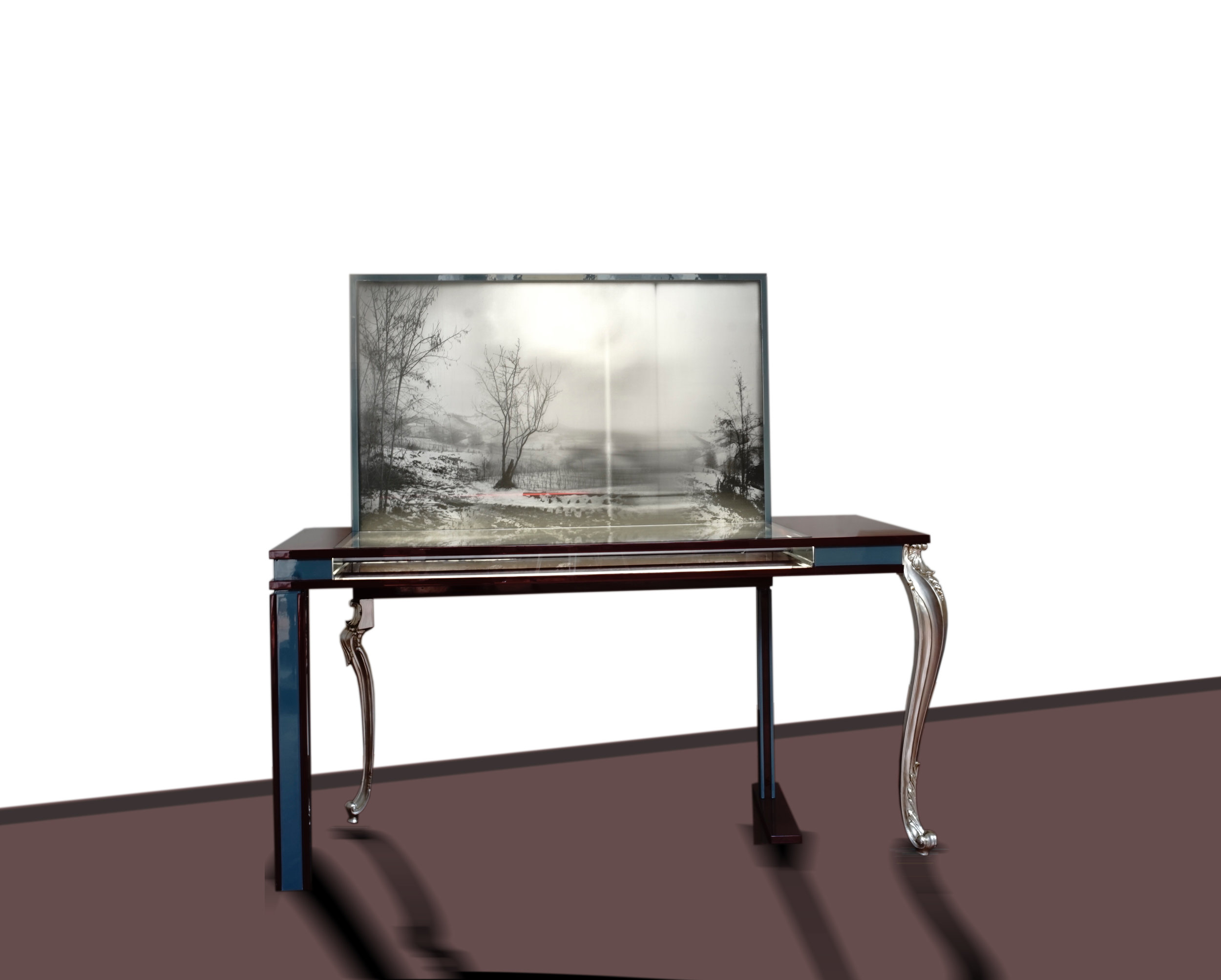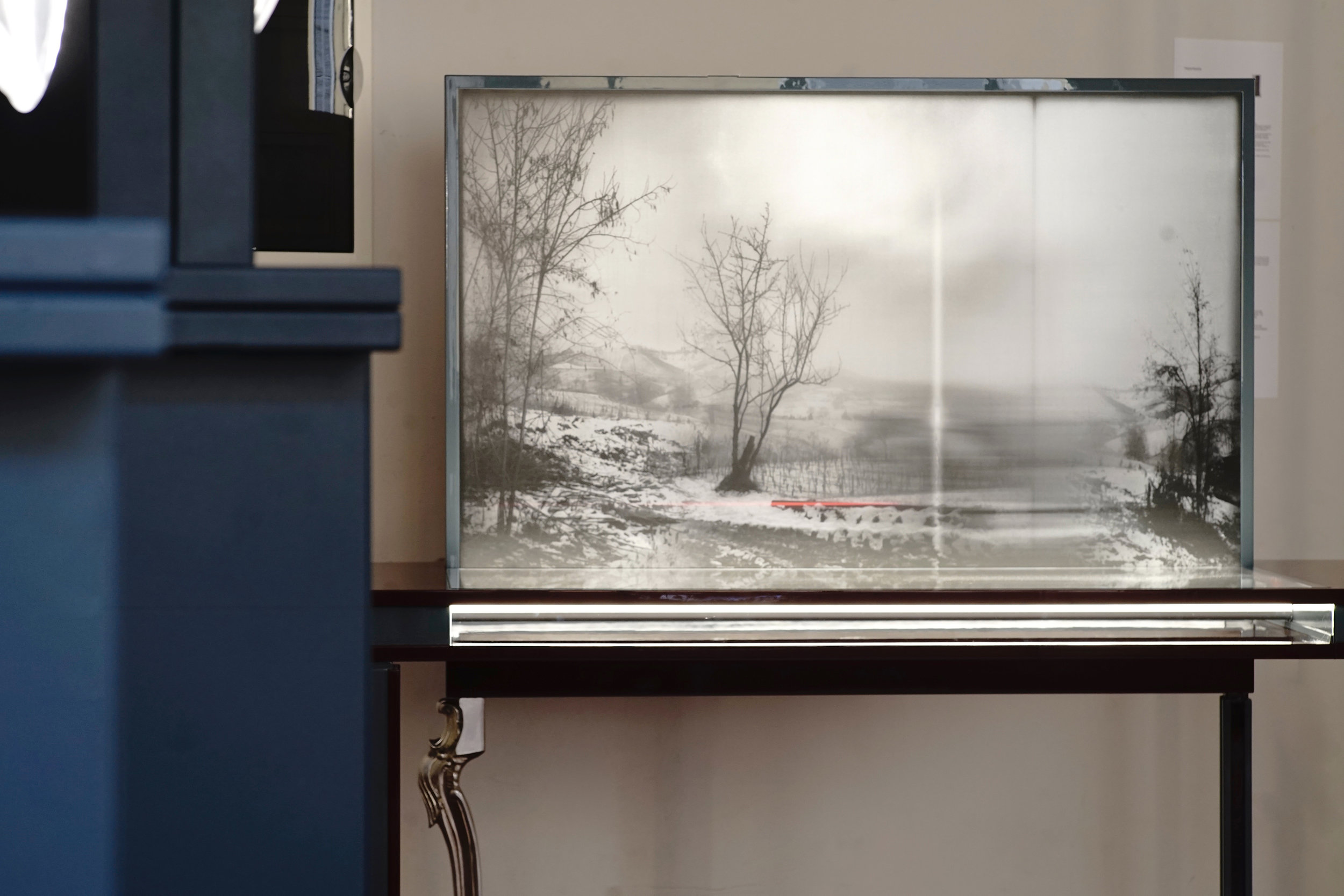‘Arnolfini’s Mirror (la dodicesima ora)’ & ‘Winterreise I° (the enlighting box)’
Maurizio Barberis in collaboration with Officine Tamborrino and C.L. Italia
Arnolfini’s Mirror concentrates on the relationship between the work of art and its staging; three structures in painted metal and methacrylate reinterpret the famous “Arnolfini Portrait” by Jan van Eyck on view at the National Gallery in London.
The Lighting Box extends the concept of the frame, opening the work to an everyday useful object and integrating it in a form of domestic furniture, namely a console. Structure in lacquered wood, legs inlaid with natural wood, photography, plexiglass, neon.
About
Maurizio Barberis has been active in the world of art and art-design since the 1980s, producing solo shows and installations (included the exhibitions at Dilmos Milano and Morat Institut in Friburg), and collaborations (including Galleria Nilufar in Milan). He has also taken part as an author to two editions of the Milan Triennale, the art and design musuem in Milan, and for a long period he worked with Philippe Daverio for the creation of a Superior School of the Applied Arts in Milan (Department of Culture of the City of Milan). He has worked with the Murano Glass Museum and the Fortuny Museum in Venice, organizing many conferences and workshops, and designed the installation of the exhibition for the 50th anniversary of the death of Mariano Fortuny. Maurizio Barberis has published photography books and an essay on Color Theory. He won a prize for best photography at the Venice Architecture Biennale of 2012. He has worked as photographer and critician with the magazine Interni and AD France for many years. His most recent works were shown at Fondazione Levi in Venice in September 2018.
OT Officine Tamborrino designs and manufactures metal furniture for residential and contract environments. The brand aims at expressing the aesthetic values inspired by the same simplicity and linearity that characterized the Italian design of the Fifties.
Constant research on materials is a key feature for Officine Tamborrino, as it specifically focuses itself on steel applications for interior design by expressing its values in terms of durability, stability and lightness. This project enhances the know-how and tradition of Tamborrino family and Scaff System, the historic company founded in Ostuni (Apulian region, Italy) which operates in warehousing solutions and industrial metal structures supply.
Nowadays Officine Tamborrino is a brand open to constant exchange with freelance designers. It has become a creative lab for conceiving unique furniture items inspired by sustainable and quality values, moving from experimental research on materials and from long-term expertise in shaping steel.
C.L. Italia was founded as a crafts company operating in the field of furniture, relying on a precious legacy of know-how, traditions and fine craftsmanship. Passion, flexibility and versatility are the constants of the company firm’s habitat concept which keeps faith with its indispensable artisan roots while also utilizing the most advanced technologies.
Solid wood of the finest varieties, briar, but also unusual materials like stones, metals, parchment and crystal are the ingredients of exclusive furnishings whose absolute value lies in a guarantee of the highest quality. Continuing experimentation, as well as refinement of classic coating techniques with shellac, aniline and wax, leads to the creation of original and personalized textures.
Maurizio Barberis in collaborazione con Officine Tamborrino e C.L. Italia
Con Arnolfini’s Mirror, Maurizio Barberis si concentra sulla relazione tra l’opera d’arte e la sua messa in scena, in particolare tre strutture in metallo verniciato e metacrilato reinterpretano il celebre dipinto di Jan van Eyck ‘I coniugi Arnolfini’ conservato alla National Gallery di Londra.
In 'The lighting box' realizza un’estensione del concetto di cornice, aprendo l’opera a un oggetto d’uso comune, integrandola in una forma d’arredo domestico, nello specifico in una consolle. Struttura in legno laccato, gambe intarsiate in legno naturale, fotografia plexi e neon.
MAURIZIO BARBERIS è attivo nel mondo dell'arte e dell’art-design dagli anni '80, producendo mostre e installazioni personali (tra cui da Dilmos Milano e al Morat Institut di Friburgo-D) e collaborazioni (tra cui la Galleria Nilufar a Milano). Ha inoltre preso parte come autore a due edizioni della Triennale di Milano e per un lungo periodo lavorato con Philippe Daverio per la creazione a Milano di una Scuola Superiore di Arti Applicate (Dipartimento di Cultura del Comune di Milano). Ha collaborato con il Museo del Vetro di Murano e il Museo Fortuny di Venezia, organizzando numerose conferenze e workshop e progettando l’allestimento della mostra per il 50° anniversario della scomparsa di Mariano Fortuny. Ha pubblicato libri di fotografia e un saggio su Color Theory. Ha vinto il premio per la migliore fotografia alla Biennale di Architettura di Venezia del 2012.I lavori più recenti sono stati esposti alla Fondazione Levi a Venezia lo scorso settembre.
